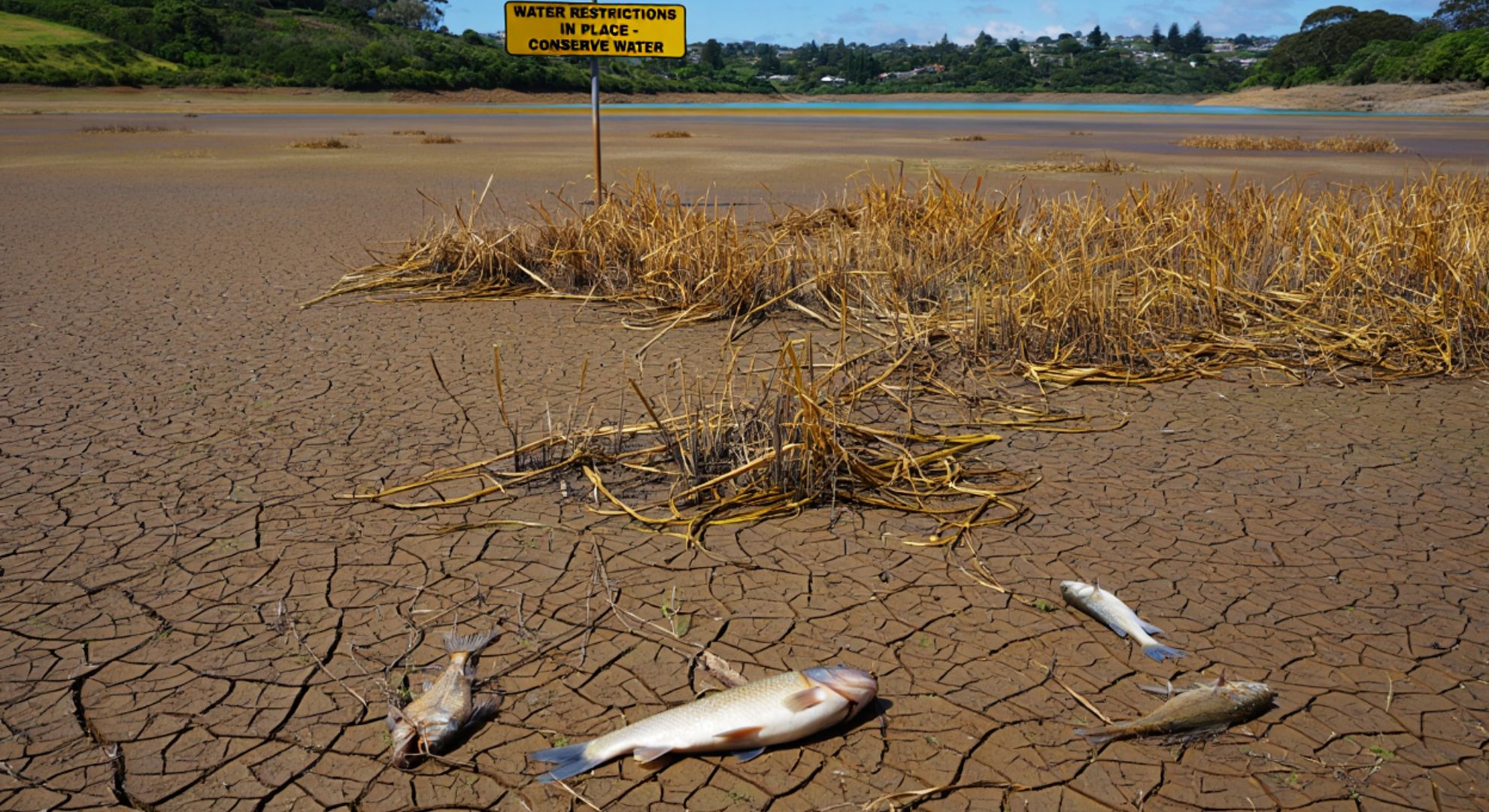A brisk, green city ringed by water now faces a paradox: the taps themselves may not be guaranteed. Scientists warn that, on current trends, the margin of safety for Auckland’s drinking supply could vanish within two decades.
This is not a prophecy of empty reservoirs tomorrow, but a deadline for decisions. “The timeline isn’t the threat; the inaction is,” said one researcher involved in long-range planning. The question is how quickly the city transforms its system from rainfall-dependent to resilience-first.
A city under pressure
Population growth is relentless. Greater Auckland is tracking toward two million residents within a generation, and per-capita use remains stubborn, especially in hot summers when lawns, pools, and construction drive peak demand.
Supply is geographically constrained. Historic dams in the Hunua and Waitākere ranges, plus a major take from the Waikato River, underpin today’s security. Yet each has environmental limits and climate exposure.
“We’ve long lived with a rainfall-rich mindset,” a hydrologist said. “We’re shifting into a reliability-poor reality.”
Why the taps are at risk
Climate variability is amplifying extremes. Auckland is getting sharper bursts of rain, but also longer, hotter dry spells. That pattern reduces the dependable trickle that keeps reservoirs balanced, even when annual totals look fine on paper.
Infrastructure adds another layer. Network leakage sits in the low double digits, pressure management is uneven, and real-time metering is partial. Every percent lost in pipes is water that must be found elsewhere—at higher cost and carbon.
Constraints matter, too. Abstraction caps protect the Waikato. Sediment and wildfire risk threaten upland catchments. And new surface storage is hard to consent and slower to deliver than demand growth.
What the numbers say
Planners model scenarios to test what breaks first: storage, treatment, or consented takes. The gap between “secure yield” and peak summer use is the stress line to watch.
| Metric | Today (approx.) | 2045 status quo | 2045 with upgrades |
|---|---|---|---|
| Average demand (ML/day) | ~470 | ~650 | ~600 |
| Peak summer demand (ML/day) | ~600 | ~800 | ~720 |
| Secure yield (ML/day) | ~520 | ~520 | ~700 |
| Drought storage (days) | ~120 | ~70 | ~150 |
| Network leakage | ~12% | ~10% | ~8% |
| Annual bill/household (NZD) | ~1,400 | ~1,900 | ~2,100 |
| Emissions intensity (kg CO2e/kL) | ~0.35 | ~0.40 | ~0.28 |
Figures are indicative scenario estimates used for planning, not official forecasts. They illustrate a simple truth: without new sources and demand cuts, summer peaks overrun the secure yield window.
“Drought isn’t a rare event anymore; it’s a supply-chain shock for cities,” one water planner noted. “You manage it like you manage energy: diversify, digitize, and decarbonize.”
The cost of doing nothing
Relying on the weather courts a cycle of emergency restrictions, lost business days, and reputational damage. Prolonged limits hit health, hospitality, and construction. Insurance and financing get pricier for water-sensitive industries. And deferred investment tends to surface later as rushed, expensive fixes.
There’s a social cost, too. Trust erodes when people see plenty of rain one month and can’t water the garden the next. Visibility of the system—and how it fails—is critical.
What residents can do now
- Fix household leaks, install low-flow fixtures, capture roof rainwater for gardens, shift irrigation to dawn, and say yes to a smart meter if offered.
Small actions scale. A few percentage points shaved off summer peaks can defer multimillion-dollar capacity projects and buffer the city through a tough season.
Big fixes on the table
Desalination. Modern desalination plants can add modular, drought-proof capacity from the coasts. Upsides: reliability and speed if modular. Downsides: higher energy use and brine disposal, unless paired with renewables and advanced outfalls.
Purified recycled water. Advanced treatment can turn highly treated wastewater into a new, safe source—either for indirect recharge of reservoirs or direct potable use. Globally, this is a mainstream, rigorously monitored solution. Public trust hinges on transparency and gold-standard monitoring.
Waikato upgrades. Expanding the existing Waikato River take and treatment offers near-term gains, but must respect iwi rights, ecological flows, and downstream users. It is a bridge, not a silver bullet.
Network intelligence. Pressure management, district flow monitoring, and citywide smart meters can cut leakage and flatten the summer peak. “The cheapest litre is the one you don’t have to treat,” engineers like to say—and they’re right.
Green and grey storage. From small neighborhood tanks and aquifer recharge to strategic new reservoirs, diversified storage smooths volatility. Nature-based solutions—restored wetlands and cooler urban canopies—also lower demand by easing heat stress.
The path is clear: combine demand management, new drought-proof supply, and smarter pipes, starting now. The window is about twenty years, but the real deadline is every dry summer between here and there. The city that plans for variability will drink through it.
